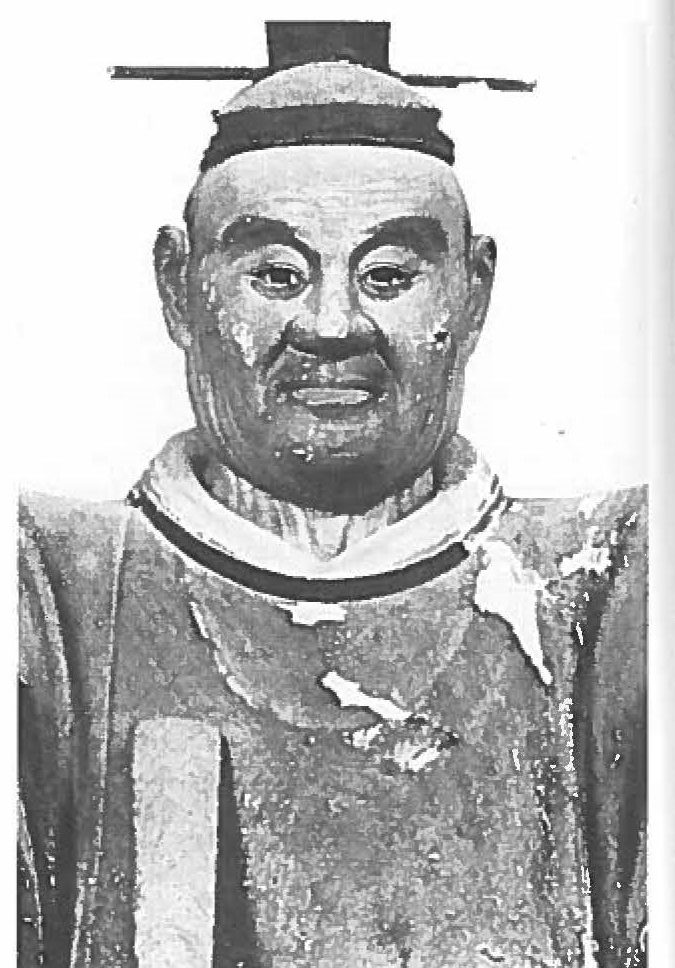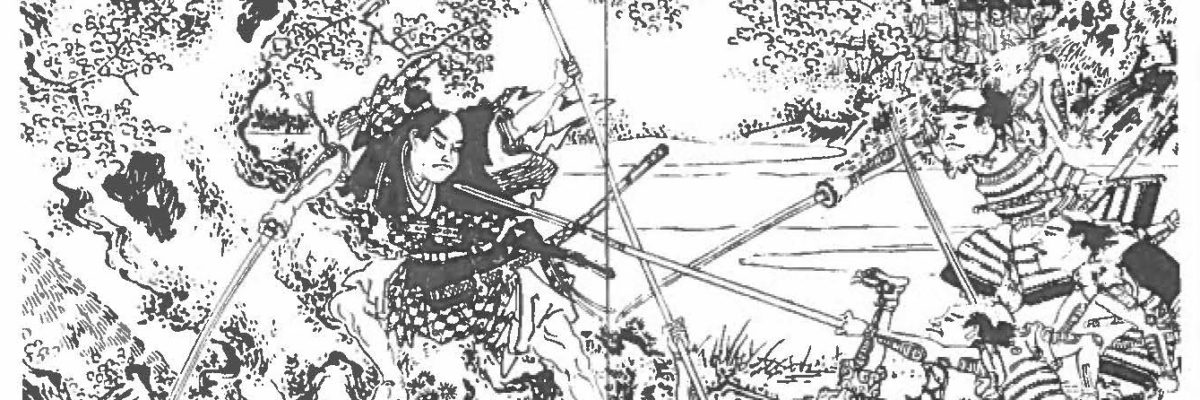An excerpt from the book “The Lone Samurai” by Stephen Tumbull
A wanderer founds a school
The swordsmen described so far in this chapter, especially Tsukahara Bokuden and Miyamoto Musashi, succeeded in their primary purpose in wandering because they developed their skills and their spiritual Insight to the maximum extent. However they were lone wolves, and never managed to pass these skills on lo others in any permanent form. We will cover the aspect of passing on traditions of ryu in the chapter which follows, but let us first examine !he wanderings of a man whose distinguished career on the battlefield was followed by a pilgrimage, and the founding of one of the most Illustrious swordllghting ryu: Kamlizuml Nobutsuna.
In the previous chaplet we described how Nobulsuna was honoured by Takeda Shlngen, but chose lhe wandering life instead of continued service to a daimyo. He set off on the musha-shugyo some lime subsequent lo 1 561, and was accompanied on his travels by two companions, his nephew Hlklta Bungoro, and Jingo Muneharu, each of whom was a renowned swordsman. One Incident that occurred on his travels has become very famous owing to Aklra Kurosawa’s Incorporating the story of It, with some modification, as a scene in the film Seven Samurai. On approaching a certain village Nobutsana was told !hat a criminal was holding a child hostage in a house. No one knew whal to do, and the Parents were desperate. Nobutsuna formulated a bold Plan. He called over a priest. and asked If he could borrow his robe. Then. out of sight of the cottage where the child was being held, he had his head shaved. In his disguise as a priest Nobutsuna approached the collage With two balls of rice In his hand. He explained to the criminal that he was a priest who had brought food for the child, and threw one of the rice balls through the doorway. He took the second rlce ball. and, offering It to the criminal, rolled II along the floor towards him. The criminal grabbed at the rice ball. letting his guard down Just for a second. Al that moment Nobutsuna seized him in aj[J.jutsu hold and pinned him lo the floor. In the Him the supposed priest kills the man with the man’s own sword. but in the original version Nobutsuna tackled the swordsman and leO him. quite unharmed, to the far from tender mercies of the villagers.
In 1571 Kamllzumi Nobutsuna received an honour that was probably without precedent for any swordsman, even a kengo. He was commissioned to demonstrate his skills before the Emperor Ogimachl (1 5 21-7 3). who apparently loved keniutsu, and was so impressed by Nobulsuna’s performance that he granted him noble rank. But Nobutsuna’s most important encounter of his Journey was that with the man who was to become the heir to his tradition of swordftghting which he was now calllng the Shlnkage-ryu (Shin means ‘new’). His oppo· nenl was lo be Yagyu Muneyoshi, a man who, like Nobutsuna, had seen much service In battle. and was well known as a master kengo, having studied sword· fighting under the ChuJo·ryii.
Nobutsuna and his companions had been given a letter of introduction to the monk lnei, Chief Priest of the Hozoln temple of Nara. lnei was related to the Yagyii. Knowing the reputation of both men, he decided to bring them together, and a contest was arranged to take place at the Hozo-ln. Nobutsuna was then Hlly·ftve years oldl”‘whlle Muneyoshi was twenty years younger. We can imagine Muneyoshi’s disappointment then, when he learnt that his opponent was not to be Nobutsuna himself, but his nephew Hiklta Bungoro. A further surprise awaited Muneyoshi when he arrived, because Bungoro was not carrying a bokuto, but what appeared to be a bundle of bamboo sticks bound together – the llrsl time anyone had seen the soon-lo-be-familiar sh/nai. Muneyoshi faced his rival holding his bokuto. Each watched the other, waiting for an unguarded moment. Then suddenly Bungoro struck, and Muneyoshi had the unfamiliar experience of feeling a wooden sword blade actually strike him across the forehead. Being used lo tsumeru techniques he Ignored the blow, and continued the duel, only to receive the shinai again. At this polnt Muneyoshi realized that he had come across a style of swordfighllng superior to his own, and was about to acknowledge this when the master lamiizuml Nobutsuna look the shinai from Hlkida Bungoro and challenged Muneyoshi to a further duel. Muneyoshi took his guard, but the mere gesture of the challenge had beaten him. He threw his bokuto to the ground and knelt before Nobutsuna, begging to be taken on as his pupil. At that moment was born the Yagyii Shinkage-ryii, the greatest school of swordsmanship that Japan was ever to see.

Book available on Amazon

